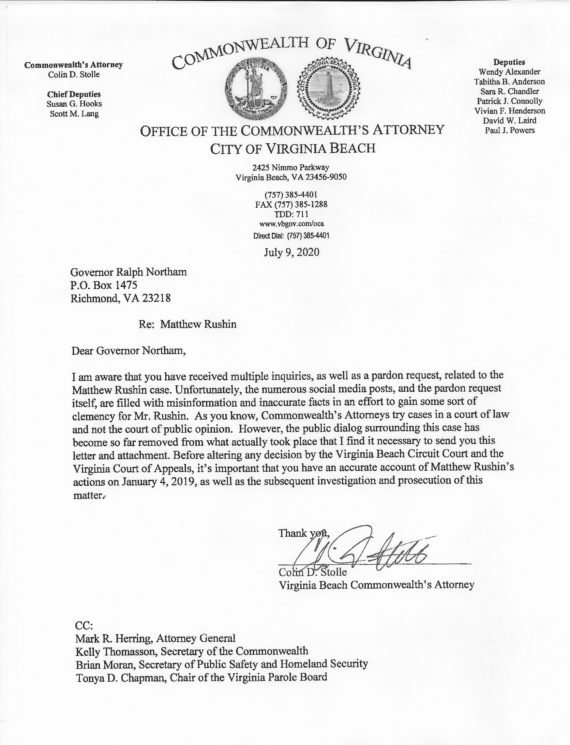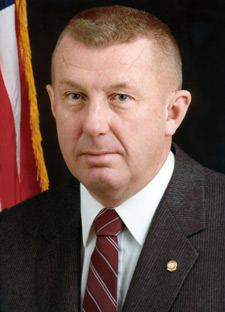
(A response to Prosecutor Stolle’s letter from Matthew’s mother has been added at the end of this blog.)
8-13-20) The prosecutor who sent Matthew Rushin to prison for causing a three-car, non-fatal accident is fighting back against complaints by Rushin’s parents and supporters that the young autistic black man was treated unfairly.
Virginia Beach Commonwealth Attorney Colin D. Stolle has told Virginia Governor Ralph Northam that pleas in social media and news accounts by Rushin’s supporters for a pardon are “so far removed from what actually took place” that the governor should ignore them.
“Numerous social media posts, and the pardon request itself, are filled with misinformation and inaccurate facts in an effort to gain some sort of clemency for Mr. Rushin,” Stolle stated in a letter dated July 9th, that was forwarded to me yesterday. He wrote his letter after more than a hundred Rushin’s supporters marched in protest of his imprisonment and Washington Post columnist Theresa Vargas publicized his plight.
On Monday, I posted a blog about Rushin and email interview with his parents under the headline “Autistic Black Man Sentenced To 50 Years in Prison For Non-Fatal Accident: Parents Outraged, Asking Va. Gov. To Pardon Him.” It explained that Rushin had been sentenced to 50 years in prison, with all but ten years suspended if he didn’t get into trouble after he’d served his time, because a vehicle that he was driving crashed head-on into oncoming traffic on January 4, 2019, injuring four, two seriously. The police and prosecutor said Rushin was trying to kill himself and intentionally caused the crash, which is why he was initially charged with attempted murder and received an unusually long prison term for a non-fatal collision. (The state’s guidelines called for a maximum of 6 years and four months, but the sentencing judge ignored that recommendation and imposed the 50 year sentence.)
Demetrius and Lavern Rushin and supporters insist Rushin lost control of his car, say he wasn’t trying to end his life, and argue that the police officers who responded to the accident pressured him into making incriminating statements. His parents also have said that white defendants charged in more serious car accidents in Virginia Beach have been treated less harshly than their son.
Rushin was diagnosed with ADHD and Asperger’s Syndrome as a child and later experienced a traumatic brain injury that made him easy to manipulate, his parents noted.
In addition to his letter to Northam, Prosecutor Stolle delivered an internal affairs summary to the governor prepared by interim Virginia Beach Police Chief Anthony Zucaro, which found no fault by his officers or the prosecution.
At the heart of the dispute is whether Matthew Rushin was attempting to end his own life.







